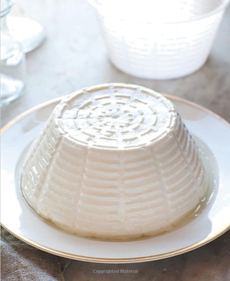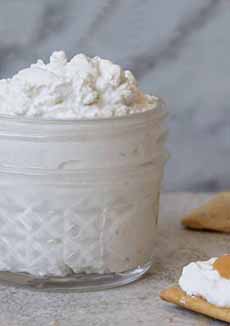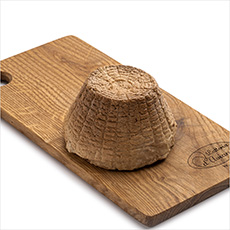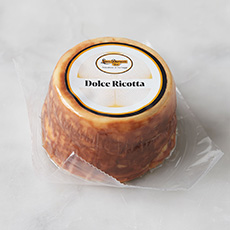TIP OF THE DAY: Ricotta Salata
|
|
Most of us are familiar with ricotta, the fresh cottage cheese-like* Italian favorite used in everything from lasagna to cheesecake to cannoli.
But what about ricotta salata, a firm, aged sheep’s milk cheese (some refer it ricotta secca). A Sicilian specialty, it is ricotta that has been pressed, salted and dried—very different from ricotta and an exciting and versatile cheese. Ricotta salata is mildly salty, with a milky and nutty flavor. It is ideal for grating, shaving, slicing or cubing. You can use it anywhere you’d use feta. It’s typically more affordable than feta or Italian grating cheeses. You can crumble it, cube it, grate it, shave it or slice it. You can enjoy it with fruit as your cheese course, or add it to a cheese platter or antipasto plate. > The history of ricotta is below. > The different types of cheese: a photo glossary. Ricotta production on the Italian peninsula dates to the Bronze Age (circa 3200–600 B.C.E. in Europe, and varying dates elsewhere). In the second millennium B.C.E., ceramic vessels called milk boilers started to appear frequently. Unique to the peninsula, they were designed to boil milk at high temperatures and prevent the milk from boiling over. The fresh acid-coagulated cheeses produced with these boilers were probably made with whole milk. Ceramic milk boilers were still used by Apennine shepherds to make ricotta as recently as the 19th century. Today metal milk boilers are used, but production methods have changed little since ancient times. By the first millennium B.C.E., the production of rennet-coagulated cheeses took over. Unlike the fresh acid-coagulated cheese, aged rennet-coagulated cheese could be preserved for much longer. The production of rennet-coagulated cheese led to a large supply of whey as a by-product. Cheese makers created a recipe that used a mixture of the whey plus milk, to make the fresh ricotta we know today. Because of its perishability, ricotta was most likely consumed locally, by the shepherds and cheesemakers. It is likely that its short shelf life did not allow broad distribution to urban markets; but even so, evidence from paintings and literature indicates that ricotta was known and likely eaten by Roman aristocrats as well. And at some point, ricotta was pressed and aged into ricotta salata. [Source] *Technically, ricotta isn’t a cheese but a by-product of the cheese-making process. The name “ricotta” means “recooked” in Italian (from the Latin recoctus). Historically, ricotta has been made from the whey that was left over from the process of making a cooked cheese. What to do with the whey has long been a question in the cheese world; many cheese makers of long ago simply fed it to their pigs, a practice still continued today. But somewhere along the line, someone discovered that the whey contained proteins and milk solids that would coagulate under high enough heat and with the presence of acid, and ricotta was born. In addition to ricotta salata, here’s also ricotta affumicata, an aged cheese that is smoked in the early part of the maturing process. Like ricotta salata, it can be eaten with bread or grated on pasta, gnocchi, and cooked vegetables. CHECK OUT WHAT’S HAPPENING ON OUR HOME PAGE, THENIBBLE.COM.
|
|
|
|
||







